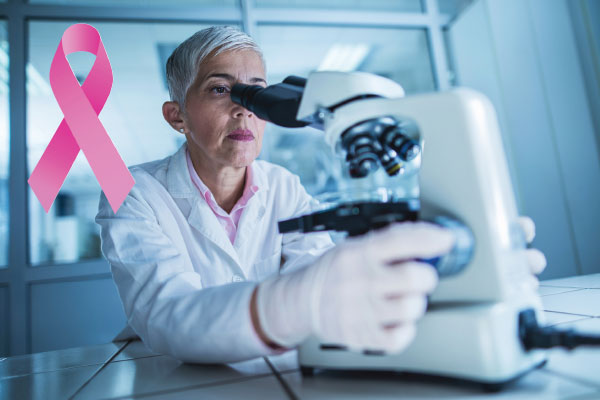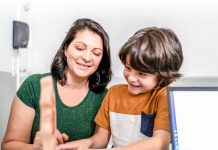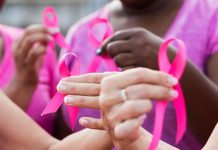Thanks to the advances in genetics and research, women can find out if they are at a higher risk of breast cancer and act to take control of their future health and wellbeing, writes Behnaz Sanjana.
October turns the spotlight to breast cancer the world over, when women – young and old – are reminded of the importance of early detection and to strengthen their resolve to live healthy.
This is also the time to increase our awareness about this, unfortunately, all too familiar disease and keep ourselves abreast of ways to prevent it.
Breast Cancer Related to Inherited Genetics
When international celebrity Angelina Jolie declared some years ago that she had opted for a double mastectomy (removal of both breasts) after testing positive for BRCA1 And BRCA2 gene mutations, she was at the receiving end of judgement – good and bad. The news raised a lot of questions about genetic testing and counselling related to this type of cancer.
Dr Ahmed Alalawi, who runs Biolab in Bahrain, took time out to clarify the basics for us. A specialist in molecular pathology and genetics, he has facilitated DNA sequencing for BRCA1 and 2 genes to be tested right here on the island. “Through genetic testing, women now have the opportunity to know more about their body type. Unlike before, it’s easy and not too expensive. The test results enable women to make important life choices,” he says.
He explains: “The mammary glands in the breast are very active glands. The rate of multiplication of cells here is very high. Each cell makes copies of all its genes, then splits into two with one set of genes in each new cell, going from one to two, to four and so on.”
He goes on to say that the BRCA1 and 2 genes are the ‘eyes’ that check for any abnormalities in cell replication. They are tumour suppressors that keep cells from growing and dividing too rapidly.
“When there is a problem, or mutation, in these genes, cells multiply uncontrolled, leading to cancerous tumours,” he says.
The expert recommends that anyone with a strong family history of breast cancer on the maternal side must get their BRCA1 and 2 genes tested for mutation. “Genetic testing can facilitate preventive action for developing breast cancer. A patient may have a problem with either one of the genes, or both of them. The degree of risk varies, depending on the extent of the mutation,” he says.
“If a patient is relatively young and at high risk, we suggest that after they have their children, they go in for elective mastectomy to greatly reduce their breast cancer risk,” he continues.
Dr Alalawi justifies this seemingly harsh and aggressive step, saying: “Women in this part of the world attach too much importance to their feminine form, even though it may be a risk to their life.
What they must realise is that they can be around for their families for a long time to come if they go in for elective mastectomy. And these days, reconstructive surgery is an excellent option, available at Salmaniya Hospital, enabling patients to look and feel absolutely normal. I have seen several women opting for this procedure – sadly many of them are ones who have actually tasted the early loss of a dear one to breast cancer and don’t want their own children and families to face the same pain. Of course, spouses and families need to be supportive through this trying time.”
 A BRCA1 and 2 gene mutation is most likely inherited from the mother. But it could be that the mother has not had breast cancer in her lifetime. “She will be used as what we call a reference patient, who we genetically study inside-out, and accordingly design a lifestyle plan for the entire family – how often they should get checked, what type of cancer could affect them in the future [ductal or lobular, or both] and steps to prevent it,” informs the doctor.
A BRCA1 and 2 gene mutation is most likely inherited from the mother. But it could be that the mother has not had breast cancer in her lifetime. “She will be used as what we call a reference patient, who we genetically study inside-out, and accordingly design a lifestyle plan for the entire family – how often they should get checked, what type of cancer could affect them in the future [ductal or lobular, or both] and steps to prevent it,” informs the doctor.
But all is not bleak, as gene mutation is not a cause, but an increased risk, for breast cancer. “It is not necessary that a positive testing for BRCA1 and 2 mutations translates to guaranteed cancer. For lower risk cases, we recommend yearly examinations, lifestyle changes and some medication to prevent the cancer from developing,” he says.
Breast Cancer Not Related to Inherited Genetics
As per www.cancer.gov, only five to 10 per cent of breast cancers are thought to be hereditary, caused by abnormal genes passed from parent to child. High levels of radiation from circumstantial factors, or in treating other medical conditions, can also damage the cells and DNA, which can result in breast cancer.
Besides this, the following aspects greatly predispose women to getting the disease (source: www.breastcancer.org):
– Thanks to unhealthy eating, girls start puberty and breast development at a very early age. The earlier breasts are formed and the longer they are exposed to stimulating or altering substances (found extensively in the environment and food), the higher the risk of breast cancer later in life.
– More women are delaying pregnancy, not breastfeeding their babies or breastfeeding for shorter durations. A full-term pregnancy and breastfeeding protect against the disease by making the breast cells mature.
– Modern life keeps us indoors and less physically active than in earlier generations. Exercise helps regulate hormone and blood sugar levels, thereby preventing any extra cell activity. Obesity is an established breast cancer risk factor, as is a lack of vitamin D, which is absorbed through exposure to sunlight.
– Hormone replacement therapy to reduce menopausal symptoms produces a moderate increase in cancer risk, and birth control pills are linked to a small increase in risk. They cause extra breast cell growth and can promote the growth of breast cancer. The longer we take these medicines, the higher the risk.
– Smoking and high alcohol consumption also increase risk. Second-hand smoke has a negative effect too.
– Perpetual stress and sleep deprivation results in lower levels of the sleep hormone melatonine, which promotes normal cell growth.
TACKLE THE TOXICS!
Unfortunately for us, in this day and age, we are exposed to pollutants – harmful synthetic chemicals that alter the chemical make-up of our bodies. It has been proven that some can directly damage our genes, while others disrupt the normal hormonal balance and lead to abnormal breast cell growth.
Our food – Shockingly, we ingest chemicals with our food every day in the form of pesticides that are used to grow it. Human and animal studies show that exposure to several widespread pollutants during early breast development can significantly increase the risk of developing breast cancer later in life.
Many cattle farms inject extra hormones and preventive antibiotics into their animals to increase meat and milk production. The end result is a weakened human immune system that is unable to effectively heal cell damage.
Fast food chains are known to recycle their used oil many times over and use carcinogens like monosodium glutamate in their food – both spell disaster to health.
Our air – Chemicals used to build and beautify our homes (think paint, sealants and other construction materials) have been linked to an increased risk for breast cancer. Scented candles and air fresheners let off toxic substances into our air too.
Our products – What goes on and around you can be absorbed into the body. Certain toxins in our personal, beauty and cleaning staples can wreak damage on our cells.
Plastic food containers, when heated or repeatedly re-used, release chemicals into the edibles they hold. Laboratory studies raise serious concerns about the possible effect of plastics on breast cancer risk.
In 2009, the USA’s President’s Cancer Panel suggested that the true burden of environmentally induced cancer has been grossly underestimated, in regard to human exposure to potential environmental carcinogens being widespread.
To sum it up, Dr Alalawi says that there are many parameters that dictate whether or not a woman will get breast cancer. He staunchly maintains that her lifestyle choices and stress management are paramount. He urges women to remember that cancer prevention is easier, cheaper and less painful than its cure.
So get examined by a professional this month and be committed to routine self-examinations and a healthy way of living all year round.





































